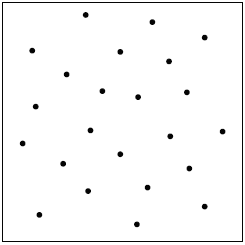| Scientists
naturally tend to see the world through the spectacles of
their own disciplines, and biologists(*) are no exception to this rule. So it is
unsurprising that biologists view human cognition
as just another biological property. But the DPD
analogies are flawed even from a biological perspective.
The following paragraphs explain why. Cognition has a property
not shared by any of the other cases in the DPD analogy
set: it has been erratically increasing in complexity
since the dawn of the animal kingdom. This requires some
explanation, because the notion of general biological
complexity — and especially of increasing
magnitude — is controversial. Richard Leakey, for
example, writes: “There are few issues more calculated
to provoke strong disagreement among biologists than that
of complexity. Or, more specifically, the idea that the
process of evolution has resulted in greater biological
complexity.” (Leakey and Lewin, 1996, p. 91) Other
biologists insist that even a bacterium is an extremely
complex organism, and thus that there is no basis for the
intuitive idea that mammals or birds are “more complex”
living beings. This attitude is a reaction against
teleological and religious notions that regard humans as
“the pinnacle of creation”, as if the procession of
life-forms on Earth (whether by evolution, or by divine
intervention) had as its ultimate purpose to culminate in
Homo sapiens. Nonetheless, the biologists’
rejection of the idea of increase in biological
complexity is also incorrect: there is support for the
notion that evolution, throughout the eons, has resulted
in some more complex organisms, however rare they
might be among the billions of species that have existed.
For
example, we can confidently claim that bacteria are less
complex than cows because cows include bacteria in their
guts, which help them digest plant cellulose, whereas
bacteria do not have cows in their protoplasm.(*) More rigorously, a cow is more complex than a
bacterium because if we try to create a virtual cow and a
virtual bacterium by simulating in computer programs all
their exchanges of energy, nutrition, and information
with their environment (assuming we also simulate their
environment to the extent that is necessary for such
programs to work), then the cow’s program will be
longer than that of the bacterium. This must be so
because parts of the cow program will be the sub-routines
for its symbiotic bacteria, and such sub-routines would
necessarily be as complex as the programs simulating any
other free-living bacteria.(*) By the
same reasoning, any multicellular creature is also more
complex than any unicellular one; and even unicellular
eukaryotic organisms are more complex than prokaryotic
ones (bacteria), because the mitochondria and
chloroplasts of eukarya are assumed to be bacteria that
were trapped inside the protoplasm of ancient bacteria,
at some time in evolutionary history. Nonetheless,
despite such examples, the biologists’ point is well
taken that it is a nontrivial exercise to compare the
complexity of two organisms that appeared relatively
recently in geological time, such as a mammal and a fish.
Fortunately, the project here is to compare the cognitive
complexity of species, not their general biological
complexity.
The notion of
comparing program lengths, suggested in the previous
paragraph, can serve to compare the cognitive complexity
of species. Every species can be associated with a list
of all behaviors that depend on reacting to external or
internal stimuli: all the “cognitive achievements” of
the species. Observe that reactions to stimuli do not
necessarily depend on neuronal processing. For example,
even a single-celled Euglena can sense the
direction of light, as can many plants, none of which
have any neurons at all. Dionaea muscipula (the
Venus Flytrap) can react to the touch of a small insect
on its leaves and trap it inside. Examples are so
abundant that it is appropriate to talk about the “cognitive
achievements” of all living beings, not just animals.
Although there is currently no way to implement this idea
in programming terms, few cognitive scientists and animal
psychologists would disagree with the conjecture that the
list of cognitive achievements of a lizard must be
shorter than the corresponding one of a chimpanzee. After
all, when zoologists claim that dolphins and chimps are
“smart animals”, they implicitly refer to something
like a list of cognitive achievements of those creatures.
The animal psychology literature is full of reports of
clever experiments showing that, for example, many
mammals are cleverer than most reptiles; many primates
are cleverer than most artiodactyls; and one hardly needs
to resort to experiments to prove that the list of
cognitive achievements of a mentally average human being
is longer than the list of any other species.
All of this supports
an application of the Minimum Description Length (MDL)
principle. The logic of this approach is not intended to
be mathematically precise, since cognitive scientists
might disagree on whether some detailed behavior
constitutes a cognitive achievement, or whether an
achievement follows from some more basic ones. But given
the large cognitive differences between some animals
(e.g., mammals and insects), disputes over details should
not affect the overall result, which would be that one
list ends up longer than the other, no matter which way
disputes are settled.
By applying the MDL
principle on the length of the cognitive achievements
list we can compare the complexity of the cognition of
any two species, and even assign an absolute value to the
cognitive complexity of a living being. For example, if
we assign the value 1 to the maximum known list, that of Homo
sapiens, and the value 0 to non-biological matter
that does not react to stimuli (e.g., a stone), then
every living species could be assigned a value between 0
and 1, according to the length of its list.
The crucial
observation — which is true of cognition but not true
of other biological properties proposed in the DPD
analogies, such as hole-boring, nose-utilizing, and
flying — is that if we make a graph with evolutionary
time on its x-axis and cognitive complexity on the
y-axis (i.e., a real number between 0 and 1), and
plot the maximum value of cognitive complexity at any
given time (i.e., the value of the “smartest” species
extant at that time), then the resulting curve will be erratically
increasing; “erratically”, because whenever the
smartest species was extinct, the curve plunged down
somewhat (to the value of the second-smartest species);
and “increasing” because, e.g., the insects (which
appeared around 350 million years ago, or Ma) are smarter
than bacteria and protists, but less smart than reptiles
(they appeared around 280 Ma), which are less smart than
mammals (~150 Ma), and so on (Arms and Camp, 1988; Cowen,
1995; Freeman and Herron, 2001). The curve should exhibit
a steep increase at its recent end, around 3 Ma, when the
brain of the first hominids started expanding, perhaps
since the appearance of the australopithecines (Lewin,
1999).
It is in this sense
that we can talk about a “trend” of increasing
cognitive complexity, whereas there is no such trend in
the properties of the DPD analogies. Aviation, which
comes closest to claiming such a trend, was discovered
early on by insects, and was rediscovered around 200 Ma
later by reptiles (e.g., the pterodactyl), birds, and
some mammals (bats, gliding squirrels). But, however we
define “flying ability”, the aviation curve will
present us with a plateau from the time of the first
flying insects until the appearance of birds, and with a
second plateau from shortly after the appearance of birds
until the present. The latter plateau results from the
unlikelihood that swifts, to use Dawkins’s example, are
the best flying machines ever. There is a simple
explanation for this difference in graphs: flight is a
discrete property. Either you soar through the air or you
don’t, and there are only limited improvements that can
be made on body design to improve the quality of flight.
Evidence for this is that birds that fly look much more
like the “prototypical bird” (sparrow, robin, etc.)
than mammals look like the prototypical mammal (Murphy,
2002). In addition, there has been plenty of evolutionary
time for such improvements to have reached perfection
several times in the past. Similarly, such properties as
using a nose or an ability to bore holes are unlikely to
display an increasing trend of complexity. In contrast,
cognition is a continuous property: it correlates with
the number of neurons of an organism — at least in
animal species. Although there is no perfect relation
between brain size and smartness, roughly speaking, more
cognitive achievements require more brain power, hence a
larger brain. Larger bodies afford larger braincases, and
this is what has allowed cognition to increase
(erratically) in geological time.
What distracts many
biologists is the extremely small ratio of “smart”
species over the millions of species that exist at any
time on Earth. (An extreme example of this reasoning,
mentioned in the introduction, is Mayr’s, who saw a
single intelligent species, Homo sapiens, against
the 50 billion or so unintelligent species that have ever
existed.) But a trend can be a trend without needing to
apply to all, or even most, members of a population. For
example, in ancient Greek culture there was a trend
toward sculpting increasingly realistic statues of human
figures, which culminated in the exquisite statues of the
classic period, famous examples of which decorate museums
around the world today. This does not mean that every
ancient Greek was a sculptor, or that there was no trend
because out of the hundreds of thousands of ancient
Greeks only a few dozen were active in statue-making.
Trends can be defined by the few, even if the masses do
not follow.
But an evolutionary
trend in increasing cognitive complexity has more
important implications than its role as a source of
argument against DPD-like analogies. If true, it has the
far deeper implication that if life evolved (or will
evolve) elsewhere in the universe, then, even if such
life were rooted in vastly different chemical machinery,
it would evolve toward creatures with human-like
cognitive complexity. But then we have to confront Enrico
Fermi’s famous question: “Where are they”? Why is
there only “deafening silence” in our universe? Why
— to the best of our current observational abilities
— do we not observe a universe teeming with radio
signals or other telltale marks of human-like
intelligence? The following, final section of this
article examines briefly this conundrum.
|





